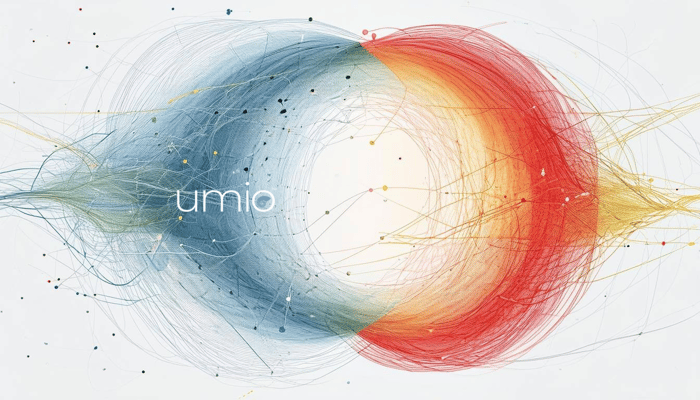The Umio infographic outlines the evolution of value creation, highlighting six forms of value...
Why Interactional Creation of Health via Experience Ecosystems?
In this piece, I summarise the logic of interactional creation via (real) experience ecosystems in twelve steps.
- Real value-creation and impact starts and ends with real experience. Valued real experiences — not outcomes or profit (these are proxy indicators of creations of valued real experience) — are the generative material of real value-creation. Hence if you want to know how to create real value and real impact, it is better to work with real experience not outcomes. Outcomes only reach superficially into real experience.
- To work with real experience and its creation, we first need a universal model of whole real embodied experience and its interactional creation.
- Focal experience ecosystem environments bear human and non-human flows and forces of the interactional creation of diverse real experiences.
- Experience ecosystems are open frames or cut-outs of interactional flows placed around contexts of real experiences that share similar forces, content, qualities, and expression. Examples of contexts are real experiences with:
- Disease (chronic or acute)
- Dis-ease (mental illness)
- The body and its movement (function, ability, image, objectification, discrimination)
- Identity (race, gender, sexuality, transitions in, discriminations of)
- Trauma (violence, abuse, accident, loss, conflict)
- Life transitions (Birth, childhood, adolescence to adulthood, relationships, ageing, death)
- Socio-cultural practices (Home, work, care, education, finances, family, social relations, travel, etc.)
- Material things including drugs, devices, products, technology and data
- Place and space including the local community, home, neighbourhood and settings
- Environment including forces of nature and climate crisis
- … and combinations of the above.
Via an experience ecosystem frame for a focal context, we explore questions of the origin, formation and persistence of the real experience as well as differences in the content, qualities, expression, and especially capacities for preventing, accessing and changing a context of real experience.
- Flows and forces coursing through experience ecosystem environments lay down or “sediment” structures (institutions, tendencies and practices) and determinants (relations of social-cultural-material-spatial factors) that can form and “lock-in” a context of real experience. Thus, experience ecosystem logic helps to see, explain and modify the forces that exist prior to structure/social determinants, forces that lead to their formation and intensification in certain contexts of real experience (e.g., helping to explain why chronic disease is more intensified and persistent in certain communities and social groups).
- An experience ecosystem contains a number of assemblages bearing relations of forces, entities, structures and determinants, each producing different qualities and repetitions of a certain real experience within a framed context. Assemblages are agencial differentiators of real experiences for a framed context. For example in Northern Ireland, I identified six previously hidden assemblages producing different qualities of chronic pain experience, each demanding a different policy, resource and design response.
- The real experiences of all experiencing actors — not just a primary beneficiary actor such as a patient — are included in an experience ecosystem frame of value-creation.
- Shared value is when there is a positive, equitable and ideally sustained transition or movement in real experience for all experiencers (actors) in an experience ecosystem. We may include nature/the environment and non-human living beings here too.
- Service ecosystems sit on top of and are usually a sub-set of an experience ecosystem. They consist of configurations of actors exchanging and integrating resources to service the needs of a beneficiary actor in the pursuit of valued outcomes. Service is one flow of social practices in an experience ecosystem environment.
- How we (our tendencies, practices, methods, and technologies) observe, perceive, know, categorise, express and act in and on a context of real experience co-constitutes the reality of all our real experiences; we are the agents of our own real experience. This is what is meant by “agential reality”: we are creators of our own reality as we create the very apparatus (modes of knowing) we use to observe and know it.
- Seeing a whole real experience ecosystem for a context along with the generative flows and forces in its environment helps to see the full extent of real experience creation, problems, differences, possibilities, and constraints on value- and impact-creation. If you’re in business, it also helps us to see and discover new markets, and to better innovate in, extend, and/or connect existing ones. Brands bear meaning(s) for the potential interactional creation of valued real experiences. A brand is a signifier of opportunity to access a desired real experience.
- Real experience is always becoming. There is no end to real experience creation via experience ecosystems. Structures, social and other determinants, problems, possibilities, markets, brands etc. etc are always being created. The task of interactional creation via experience ecosystems is never done.

Book a two-hour consultation
£400.00Explore our acclaimed Health Ecosystem Value Design® framework applied to a health and/or social context or contexts of your choice. Share any relevant documentation before the consultation, then obtain a tailored briefing of how your enterprise can drive all-win-more value and impacts, centred on our radical new framing and models of real lived experience and health/care ecosystems. After the consultation, obtain a one-page written summary of how to begin realising the possibilities we explored. Total consultation time of 2 hours.



